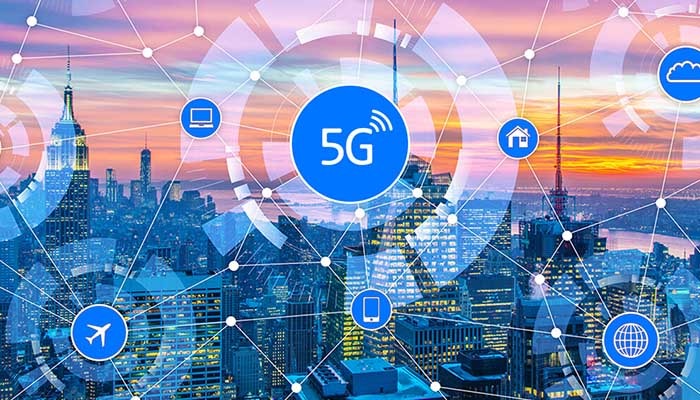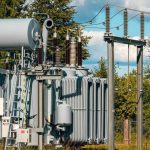Introduction
Imagine downloading an entire movie in seconds, connecting thousands of devices simultaneously, and experiencing near-instant communication. This is the promise of 5G networks—the fifth generation of wireless technology that’s transforming how we connect. But how does 5G work, and what makes it faster and more efficient than previous networks? The answer lies in the fascinating world of electrical signal processing. In this deep dive, we’ll explore the inner workings of 5G, breaking down complex concepts into simple, engaging explanations. Let’s dive into the future of connectivity! 📡📱⚡
🧠 What Is 5G?
5G stands for the fifth generation of wireless communication technology. It offers:
- 🚀 Faster Speeds: Up to 10 Gbps—100 times faster than 4G!
- 🕒 Lower Latency: Response times as low as 1 millisecond, enabling real-time communication
- 📡 Increased Capacity: Supports millions of connected devices per square kilometer
- 🔋 Improved Efficiency: Uses less energy, extending battery life for connected devices
🌊 Wireless Signals: The Foundation of 5G
At its core, 5G relies on wireless signals—electromagnetic waves that travel through the air. These signals carry information using radio frequencies (RF), just like Wi-Fi, Bluetooth, and older cellular networks. But what makes 5G unique is how it processes these signals to deliver faster, more reliable connections.
Key Concepts:
- Frequency: Measured in hertz (Hz), it determines how fast a wave oscillates. Higher frequencies carry more data.
- Bandwidth: The range of frequencies a network can use. More bandwidth = faster data transmission.
- Latency: The delay between sending and receiving data. Lower latency means faster response times.
📶 How 5G Works: The Signal Processing Magic
-
Sending Data: Electrical to Electromagnetic Signals
- When you send a message or stream a video, your device converts the digital data into electrical signals.
- These signals are then modulated onto radio waves (electromagnetic signals) using advanced modulation techniques.
- The modulated radio waves are transmitted through antennas, traveling through the air to nearby 5G towers.
-
Receiving Data: Electromagnetic to Electrical Signals
- When you receive data, your device’s antenna captures radio waves from a 5G tower.
- The radio waves are converted back into electrical signals inside your device.
- These signals are processed by the device’s electronics to reconstruct the original digital data, displaying it as text, video, or audio.
💡 Key Technologies Behind 5G Signal Processing
🚀 1. Millimeter Waves (mmWave):
- 5G uses higher frequencies (up to 300 GHz), known as millimeter waves, which can carry massive amounts of data.
- Higher frequencies have shorter wavelengths, enabling faster speeds and more simultaneous connections.
📡 2. Massive MIMO (Multiple Input, Multiple Output):
- 5G antennas have dozens or even hundreds of antennas, creating multiple data streams simultaneously.
- This technology increases network capacity and improves signal strength.
🔄 3. Beamforming:
- Beamforming focuses wireless signals directly toward specific devices rather than broadcasting them in all directions.
- This improves speed, reliability, and energy efficiency.
💨 4. OFDM (Orthogonal Frequency-Division Multiplexing):
- OFDM breaks data into smaller packets and sends them over multiple frequencies simultaneously.
- This reduces interference and ensures faster, more stable connections.
📶 5. Network Slicing:
- 5G networks can be divided into virtual slices, each optimized for different applications (e.g., ultra-fast video streaming, low-latency gaming, or massive IoT connections).
🏗️ Signal Processing in 5G: A Fun Highway Analogy 🚗
Think of 5G networks as a futuristic highway system for data:
- 🛣️ Frequency Bands: The lanes of the highway—more lanes mean more cars (data) can travel at once.
- 🚗 Data Packets: Cars carrying information from one place to another.
- 🏎️ mmWave: High-speed lanes reserved for fast-moving traffic, perfect for streaming and gaming.
- 🚦 Beamforming: Smart traffic signals that guide cars directly to their destinations, avoiding congestion.
- 🧩 MIMO: Multiple lanes stacked on top of each other, allowing more cars to travel simultaneously.
This advanced “data highway” ensures faster speeds, lower delays, and more reliable connections—even during rush hour!
🌍 5G Frequency Bands: Low, Mid, and High
| Frequency Band | Range | Speed | Coverage | Use Case |
|---|---|---|---|---|
| 📡 Low Band (Sub-1 GHz) | Long range, penetrates walls | Slower speeds (up to 100 Mbps) | Rural areas and broad coverage | |
| 🚀 Mid Band (1-6 GHz) | Balanced range and speed | Faster speeds (up to 1 Gbps) | Urban areas, general 5G coverage | |
| 🏎️ High Band (mmWave) | Short range, limited by walls | Ultra-fast speeds (10+ Gbps) | Stadiums, cities, and high-demand zones |
📡 From Device to Tower: The 5G Communication Process
- Device Sends Data: Your phone or device transmits data using radio waves.
- Nearby 5G Tower Receives Signal: The tower’s MIMO antennas capture the signal, process it using beamforming, and transmit it to the core network.
- Core Network Routes Data: The core network acts like a data hub, routing your information to its destination (e.g., a website server or another device).
- Response Travels Back: The response data is sent back through the core network, 5G tower, and finally to your device.
This entire process happens in milliseconds, enabling real-time communication, streaming, and gaming.
⚡ Why Is 5G Faster Than 4G?
✅ Higher Frequencies: Millimeter waves can carry more data than lower-frequency signals used by 4G.
✅ More Bandwidth: 5G uses wider frequency bands, allowing more data to flow simultaneously.
✅ Advanced Signal Processing: Technologies like MIMO, beamforming, and OFDM reduce interference and increase efficiency.
✅ Lower Latency: Shorter transmission times mean faster responses, crucial for real-time applications like gaming and autonomous vehicles.
💡 Real-World Applications of 5G Networks
📱 1. Faster Smartphones:
- Stream 4K videos, download large files instantly, and enjoy lag-free gaming.
🚗 2. Autonomous Vehicles:
- Self-driving cars rely on low-latency 5G connections to communicate with other vehicles and traffic systems.
🏡 3. Smart Homes and Cities:
- 5G enables smart appliances, security systems, and city infrastructure to connect and communicate seamlessly.
🏥 4. Healthcare:
- Telemedicine, remote surgery, and real-time patient monitoring are possible thanks to 5G’s speed and reliability.
🎮 5. Virtual and Augmented Reality:
- VR and AR experiences become more immersive with low latency and high-speed data transmission.
🌍 6. Industrial IoT (Internet of Things):
- Factories and warehouses use 5G to connect sensors, robots, and machines, improving efficiency and automation.
🛡️ Is 5G Safe?
Yes! 5G networks use non-ionizing electromagnetic waves, which do not damage DNA or cause harm. Regulatory agencies like the World Health Organization (WHO) and the Federal Communications Commission (FCC) have confirmed that 5G is safe for public use.
🔮 The Future of 5G and Beyond
As 5G continues to expand, its impact will be felt across every industry, from healthcare and transportation to entertainment and education. But the journey doesn’t stop here—researchers are already exploring 6G networks, which promise even faster speeds, smarter connectivity, and revolutionary new applications. 🚀📡🌎
📝 Conclusion
5G networks represent a quantum leap in wireless communication, delivering faster speeds, lower latency, and greater capacity than ever before. By harnessing high-frequency signals, advanced signal processing techniques, and smart antenna technologies, 5G is transforming the way we connect, communicate, and experience the world. From streaming and gaming to smart cities and self-driving cars, the possibilities are endless. So the next time you download a movie in seconds or enjoy lag-free gaming, remember the incredible science of electrical signal processing that makes it all possible! 📡⚡💡😊


